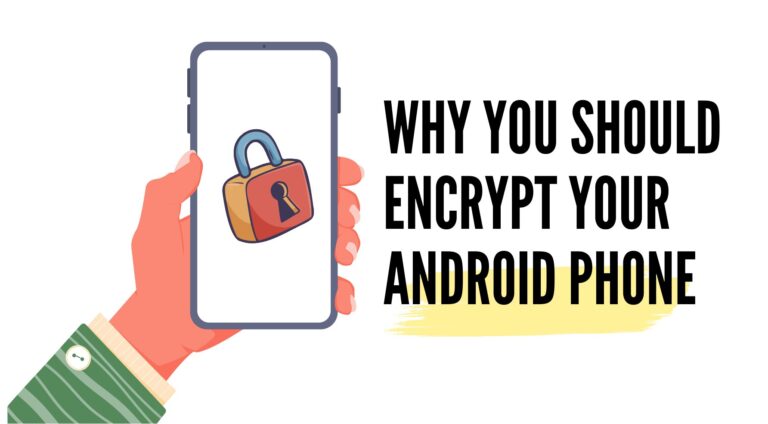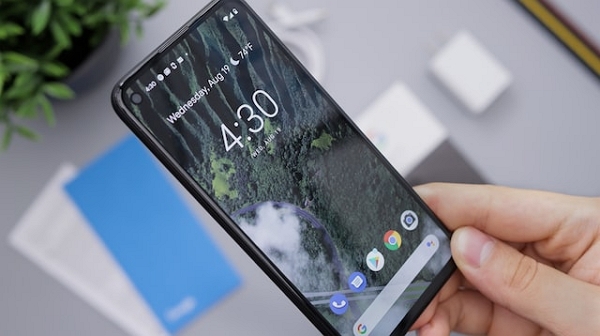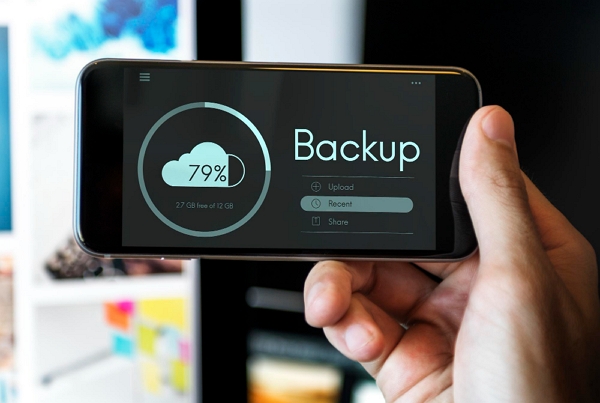How and Why You Should Encrypt Your Android Phone
In today's digital age, smartphones have become an integral part of our daily lives. We use them to communicate, browse the internet, access social media, and store personal information.
However, the convenience of smartphones also brings the risk of data breaches and cyber-attacks. That's where Android encryption comes in.

In this article, we'll explore the benefits of encrypting Android devices, the different types of encryptions available, and how to encrypt android phone step by step.
- Part 1 : What is Android Encryption?
- Part 2 : Why is it Important to Encrypt Android Phones?
- Part 3 : Android Device Encryption: Pros and Cons
- Part 4 : Two Types of Encryptions Used on Android Phones
- Part 5 : How to Encrypt Android Phones in 4 Steps

- Part 6 : The Best Practices for Encrypting Android Phones
- Part 7 : How to Remove Device Encryption on Android?
- Part 8 : Protect Company Devices with AirDroid Business MDM
- Part 9 : Conclusion
- Part 10 : FAQs about Android Encryption
Part 1. What is Android Encryption?
Android encryption is a security feature that converts data on your phone into an unreadable format, providing a safeguard against potential security breaches.
To decrypt the encrypted data and access it, you need to provide a decryption key, which is usually your device password or PIN. Phone encryption can protect various types of data on your device, such as contacts, emails, photos, and videos, ensuring their confidentiality and integrity.
Part 2. Why is it Important to Encrypt Android Phones?
Encrypting Android phones is essential for both personal and business use to guarantee data security. Let's explore some compelling reasons why encrypting an Android phone is imperative:
For Individuals:
- Protects sensitive data from potential hackers, cybercriminals, or unauthorized access.
- Adds an extra layer of protection to personal data, such as messages, contacts, photos, videos, and other media files, making them unreadable and inaccessible without the decryption key.
- Helps prevent data compromise in case of a lost, stolen, or hacked device.
For Businesses:
- Ensures compliance with regulations and standards related to data protection, avoiding legal liability, financial loss, and reputational damage.
- Safeguards sensitive business data, such as confidential documents, financial records, and proprietary information.
- Provides an additional security measure to protect against data breaches and unauthorized access to business information on Android phones.
Part 3. Android Device Encryption: Pros and Cons
Protecting your Android device by using encryption has its own set of benefits and drawbacks. Let's take a closer look at the pros and cons of encrypting your android phone:
The benefits of encrypting Android phones
Android device encryption offers several advantages, especially for organizations that need to comply with industry regulations or government mandates for protecting customer data.
Noncompliance with such requirements can result in hefty penalties, which can be avoided by encrypting your Android phone.
In addition, phone encryption can give you a greater sense of security and peace of mind, especially if you regularly access sensitive information or have important data that is not easily replaceable.
The drawbacks of encrypting Android phones
While encrypting Android phones provides numerous benefits, there are certain drawbacks that users should be aware of. These include:
• Slower device performance
Older devices with slower processors or limited RAM may experience slower app launches, longer boot times, battery drain, and overall sluggish performance.
• Compatibility issues
Customized apps or services developed by companies may not be compatible with encrypted data, which is important to consider, especially for company-owned devices.
• Risks of data loss
Forgetting the encryption key can result in the loss of all data on the device without the possibility of recovery. In such cases, the device will need to be reset, and all information will be wiped out, requiring a fresh start.
In conclusion, although encrypting your Android phone can be beneficial, particularly if you store sensitive information on it, it is crucial to carefully weigh the potential downsides before deciding to carry out Android encryption.

Part 4. Two Types of Encryptions Used on Android Phones
Android devices offer two primary types of device encryptions: file-based encryption and full disk encryption. Both methods are used to secure data on your device, but they operate differently and have their own unique advantages and disadvantages.
| Features | File-based Encryption | Full-disk Encryption |
|---|---|---|
| Scope of Encryption | Individual files and directories | Entire device, including operating system and user data |
| Encryption Method | Each file/directory encrypted with its own unique key | Entire device encrypted with a single key |
| Performance Impact | Less resource-intensive | More resource-intensive, may impact device performance |
| Use Case | Devices with sensitive data, sharing files | Devices with extremely sensitive information, maximum security required |
| Storage Flexibility | Can choose specific files/directories to encrypt | Encrypts everything on the device, less flexibility in choosing what to encrypt |
📍How to choose the one best suited for your needs?
Your choice of encryption should depend on your specific needs and use case. If you only need to encrypt certain files or folders, file-based encryption would be a better choice.
However, if you prioritize maximum security and do not mind the performance trade-offs, full-disk encryption may be the better option.
Ultimately, you should make your decision based on your specific requirements and use case.
Part 5. How to Encrypt Your Android Phones in 4 Steps
Android phone encryption can be a straightforward process if you follow the right steps. The following guide will take you through the process of how to encrypt Android phone step by step.
- Step 1.Back up Data
Don't forget to back up your data before encrypting your Android phone. This precautionary measure guarantees that no essential files are lost during the Android encryption process.
There are multiple ways to back up your data, such as transferring the files to your computer by connecting your device or utilizing a cloud service like Google Drive or Dropbox.

- Step 2.Ensure Your Device is Not Rooted and is 80% Charged
Rooting your device can compromise the security of your personal information and files, making it vulnerable to attacks by hackers.
Therefore, it is recommended to check that your device is not rooted before attempting encryption.
Before starting the encryption process, make sure your device has a charge of at least 80%. Alternatively, you can keep it plugged in during the entire process for a seamless experience.
If your device runs out of battery during the encryption process, it can result in data loss or other issues since the process usually takes over an hour to complete.

- Step 3.Navigate to "Security & Location" > "Encryption & Credentials" > "Encrypt Phone".
To initiate the encryption process, navigate to the "Security & Location" section of your Android device's Settings app.
From there, select "Encryption & Credentials" and then choose "Encrypt Phone" or "Encrypt Tablet," depending on your device.
The system will prompt you to input your lock screen password or PIN to confirm the encryption process.
- Step 4.Wait for Encryption to Complete
- Take note that newer Android devices running Android 6.0 or later may come encrypted by default.
To verify if your device is encrypted, navigate to the Security & Location section of the Settings app and locate the "Encryption" or "Encrypt Phone" option.
Part 6. The Best Practices for Encrypting Android Phones
Here are some best Android encryption practices to follow:
🔹Adopt a robust password or lock screen pattern:
Select a password that is not easy to predict and refrain from reusing passwords across multiple accounts.
🔹Monitor and manage encrypted devices:
Prevent security breaches by maintaining the efficient operation of your encrypted devices.
🔹Keep devices updated at all times:
Consistently update the applications and software installed on your devices, including security patches, to eliminate security vulnerabilities.
🔹Utilize two-factor authentication:
This involves an additional form of identification, such as a fingerprint or a code sent to your phone, in addition to your password.
🔹Create backups of your data:
This can be used to restore your data if any issues occur during the encryption process.
Part 7. How to Remove Device Encryption on Android?
The process of removing device encryption on Android can vary based on different versions of Android or the device manufacturer. In general, you can disable encryption by going through below steps:
- Step 1.Go to the device settings
- Step 2.Select the "Security" or "Lock screen and security" option
- Step 3.Enter the device password or PIN
- Step 4.Select "Encryption" or "Encrypt phone"
- Step 5.Choose the "Decrypt phone" or "Turn off encryption option"
It is important to note that removing device encryption may also require a factory reset, which will erase all data on the device.
For a secure and seamless execution of the process, it is recommended to consult the device manufacturer's documentation or engage the services of a qualified IT professional.
Part 8. Protect Company Devices with AirDroid Business MDM
By following these best practices, you can effectively fortify your encrypted Android phone and safeguard it against possible hazards.
If you're in charge of company-owned Android devices, using a Mobile Device Management (MDM) solution like AirDroid Business MDM is a smart move.

It adds an extra layer of protection, makes managing devices easier, and gives you better control over device security.
AirDroid Business features include:
- Remotely access and control devices
- Proactive monitoring devices in real-time
- Advanced encryption
- Automated device provisioning
- Alerts and workflow
- Mobile application management
Part 9. Conclusion
To safeguard corporate sensitive data and prevent any unauthorized access or potential data breaches, Android encryption serves as a crucial tool.
However, it's crucial to bear in mind that securing work devices requires continuous effort, and regularly managing and monitoring encrypted phones is vital.
By following these recommended practices and utilizing effective solutions, you can guarantee the security of company-owned Android devices and the information they hold.




Leave a Reply.